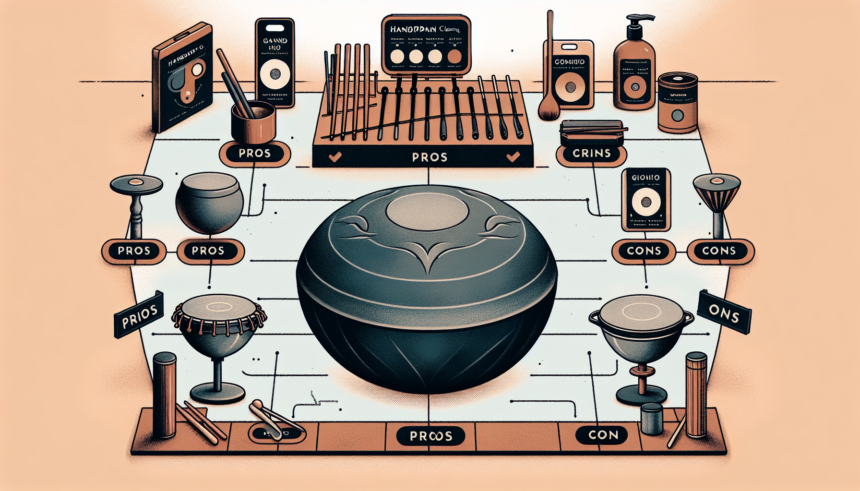The handpan, a captivating musical instrument cherished for its ethereal tones, requires proper care to maintain its quality and durability. One of the critical aspects of handpan maintenance is cleaning. Various cleaning kits are available in the market, each with its unique set of advantages and disadvantages. This article delves into the pros and cons of different handpan cleaning kits to help you make an informed decision.
1. Microfiber Cloth Kits
Pros:
- Gentle on Surface: Microfiber cloths are known for being gentle on delicate surfaces, making them ideal for the sensitive exterior of a handpan.
- Effective Dust and Dirt Removal: Microfibers are excellent at picking up dust and dirt without scratching the surface.
- Reusable and Washable: These cloths can be washed and reused multiple times, offering long-term usability.
- Cost-Effective: Generally, microfiber cloth kits are affordable and provide good value for money.
Cons:
- Not Suitable for Deep Cleaning: While excellent for surface cleaning, microfiber cloths may not be effective for removing stubborn stains or buildup.
- Requires Regular Washing: To maintain their effectiveness, microfiber cloths need to be washed regularly, which might be an added chore for some users.
2. Oil-Based Cleaning Kits
Pros:
- Prevents Rusting: Oils create a protective layer on the handpan’s surface, safeguarding it against rust and corrosion.
- Enhances Shine: Regularly using oil-based cleaners can enhance the handpan’s shiny appearance, keeping it looking brand new.
- Deep Cleaning Capability: These kits are effective in removing stubborn dirt and grime that microfiber cloths may not handle well.
Cons:
- Potential for Residue: If not wiped thoroughly, oil can leave a sticky residue on the handpan’s surface.
- More Time-Consuming: The process requires applying oil, letting it sit, and then buffing it off, which is more time-intensive than using a simple cloth.
- Messy Application: Handling oil can be messy and may stain clothes or surfaces if not careful.
3. Specialized Handpan Cleaners
Pros:
- Formulated for Handpans: These cleaners are specifically formulated for handpans, ensuring they are safe and effective for use.
- All-in-One Solution: Most specialized cleaners come as an all-in-one solution for both cleaning and protecting the handpan.
- Quick and Easy to Use: These products are generally easy to apply and require minimal effort to achieve good results.
Cons:
- More Expensive: Specialized cleaners tend to be pricier than general cleaning products like microfiber cloths.
- Limited Availability: These cleaners might not be readily available in local stores and may need to be ordered online.
- Chemical Concerns: Some users might have concerns about the chemical composition of the cleaners and their potential impact on the environment or the instrument over time.
4. Eco-Friendly Cleaning Kits
Pros:
- Environmentally Conscious: These kits use eco-friendly materials and solutions, reducing the environmental impact.
- Ideal for Sensitive Users: Eco-friendly products are often free from harsh chemicals, making them suitable for users with sensitivities.
- Non-Toxic: These products are generally non-toxic and safe to use around children and pets.
Cons:
- Costly: Eco-friendly options can be more expensive due to the use of natural and sustainable ingredients.
- Less Potent: Some users find that eco-friendly cleaners might not be as effective in removing stubborn grime compared to chemical-based cleaners.
- Limited Options: The variety of eco-friendly handpan cleaning kits is limited, which might make it harder to find a product that meets all your needs.
5. Combination Kits
Pros:
- Comprehensive Care: Combination kits often include multiple products such as microfiber cloths, oils, and specialized cleaners, providing comprehensive care for your handpan.
- Convenience: Having all necessary cleaning supplies in one kit is convenient and saves time in searching and purchasing multiple items separately.
- Cost-Effective Bundles: These kits can be more cost-effective in the long run as they combine several products at a reduced overall price.
Cons:
- Potential for Redundancy: Some users might find that they do not need all the products included in the combination kit, leading to unused items.
- Higher Initial Cost: The upfront cost of combination kits can be higher than purchasing individual items as needed.
- Quality Variation: The quality of each item in the kit might vary, and some products might not meet the user’s expectations.
Conclusion
The choice of a handpan cleaning kit depends largely on individual preferences, budget, and specific cleaning needs. Microfiber cloth kits are great for regular maintenance and are highly cost-effective, but they may not tackle deep cleaning. Oil-based kits offer excellent rust protection and shine but can be messy and time-consuming. Specialized handpan cleaners are designed specifically for the instrument, ensuring safety and effectiveness, yet they can be more costly. Eco-friendly kits appeal to environmentally conscious users but might be less potent against tough grime. Combination kits offer comprehensive care but could include redundant products and come with a higher initial cost.
Ultimately, the best cleaning kit for your handpan is one that aligns with your cleaning habits, the condition of your instrument, and the level of convenience you seek. Regular maintenance with the appropriate products will ensure that your handpan remains in excellent condition, producing beautiful sounds for many years to come.
FAQs
1. How often should I clean my handpan?
It is recommended to clean your handpan at least once a month, or more frequently if you play it regularly. Consistent cleaning can prevent the buildup of dirt and oils, maintaining the instrument’s sound quality and appearance.
2. Can I use regular household cleaners on my handpan?
It is not advisable to use regular household cleaners on a handpan as they may contain harsh chemicals that can damage the instrument’s surface. Always choose products specifically designed for handpans or delicate instruments.
3. What type of oil is best for my handpan?
Mineral oil, such as those used for food preparation, is commonly recommended for handpans. It is safe, non-toxic, and effective in preventing rust and enhancing shine.
4. How can I avoid scratching my handpan while cleaning?
To avoid scratching, use soft, non-abrasive materials like microfiber cloths and ensure there is no dirt or grit on the cloth before wiping the surface. Gentle, circular motions are usually effective in cleaning without scratching.
5. Are eco-friendly cleaners as effective as regular ones?
Eco-friendly cleaners can be effective, but their potency varies. While they are great for routine maintenance and safety, some may not be as effective in removing tough grime as chemical-based cleaners. It often comes down to the specific formulation of the eco-friendly product.





